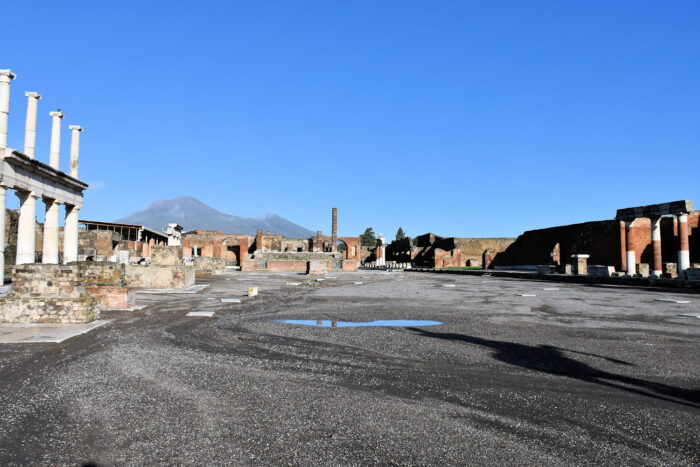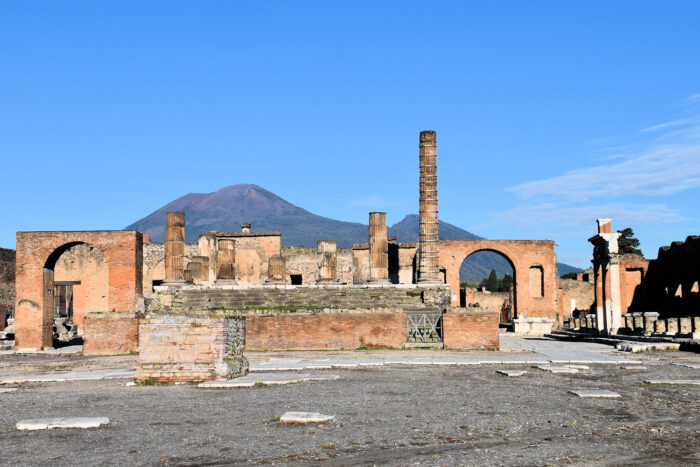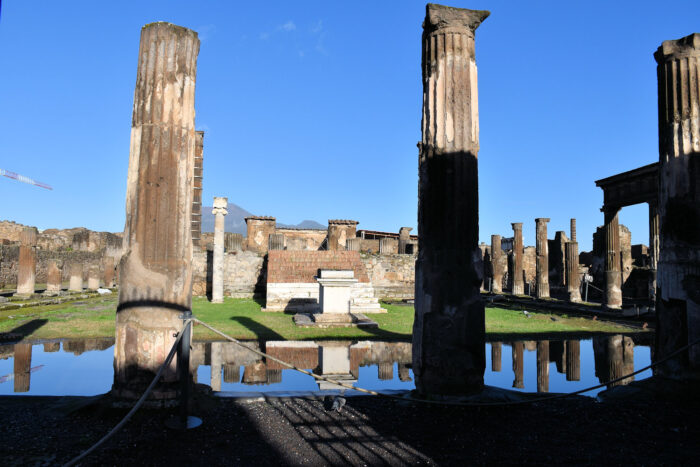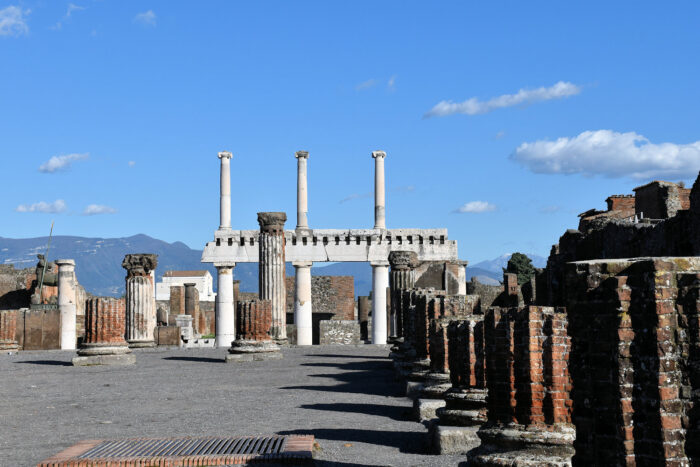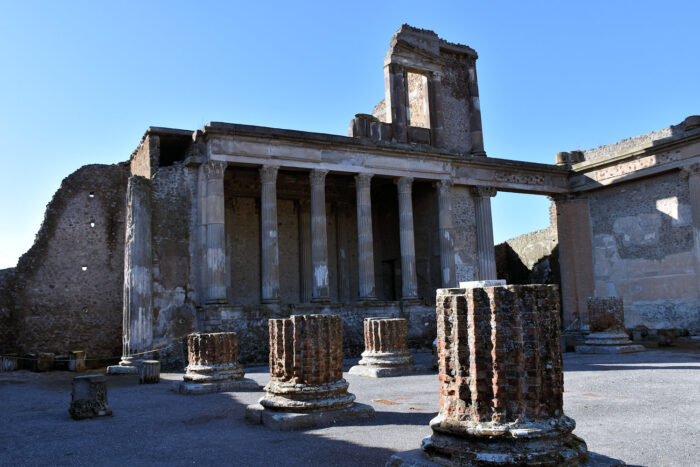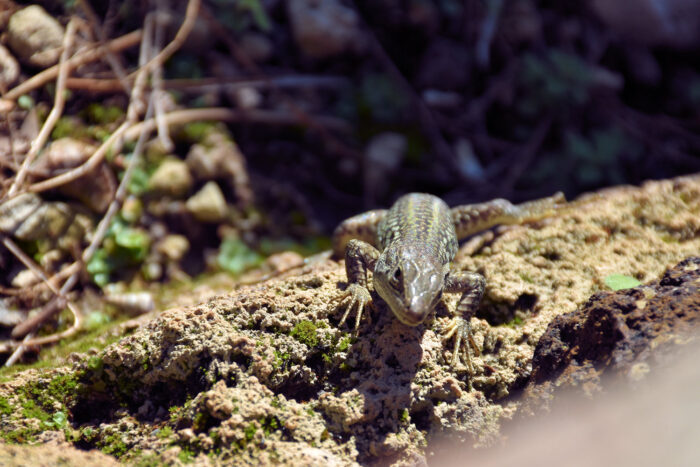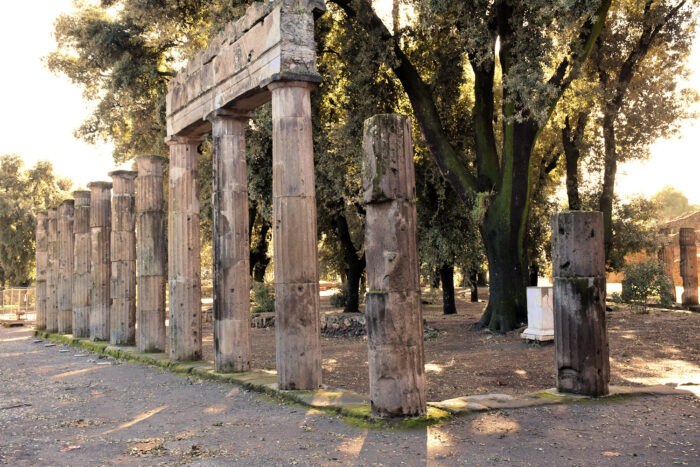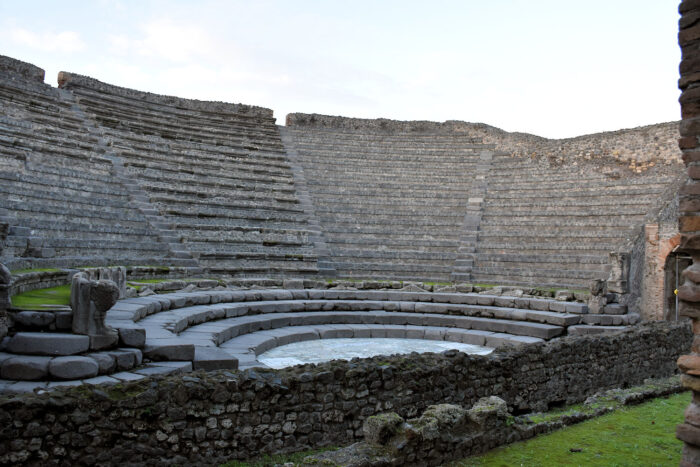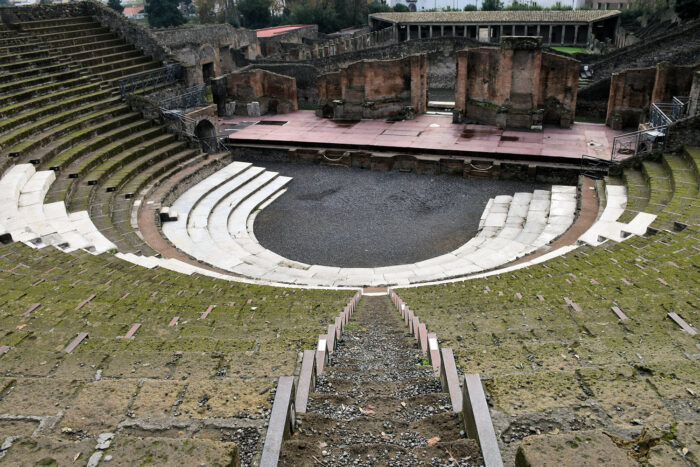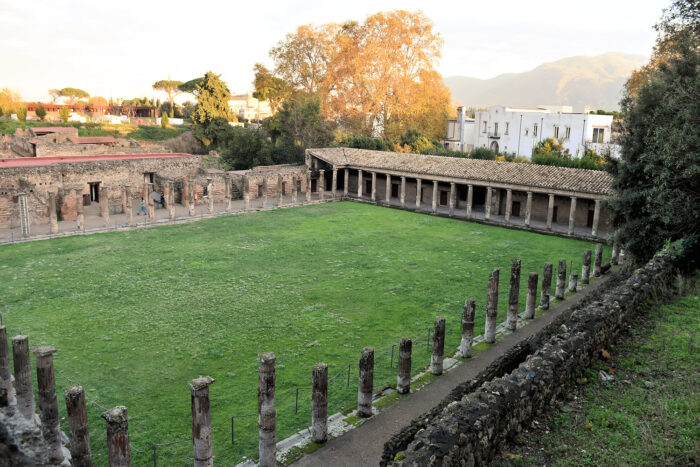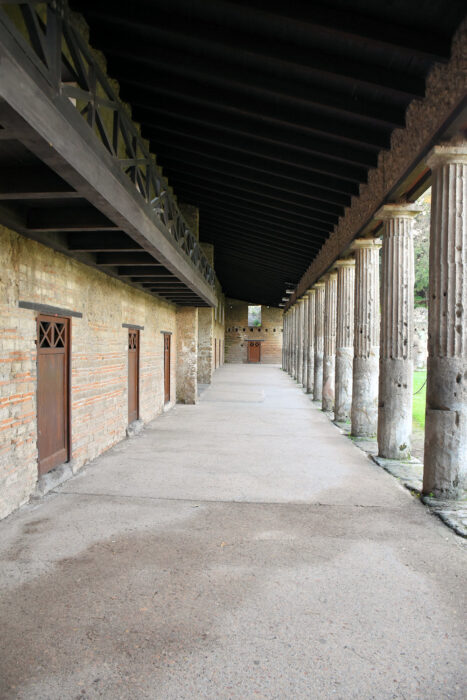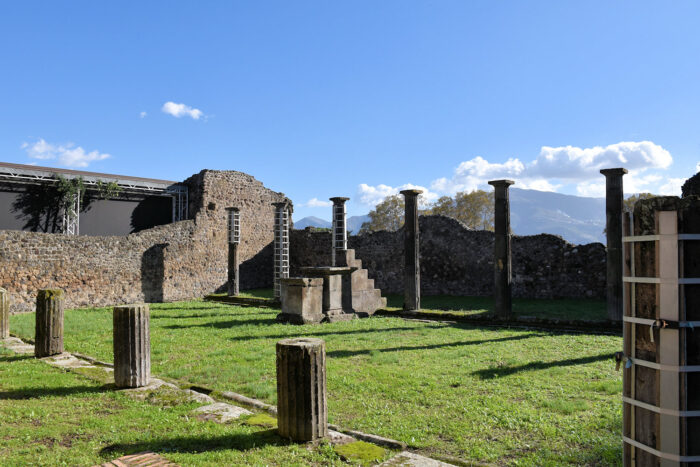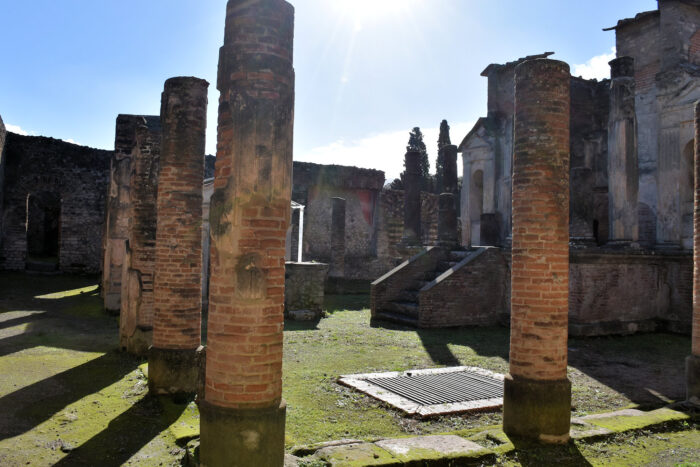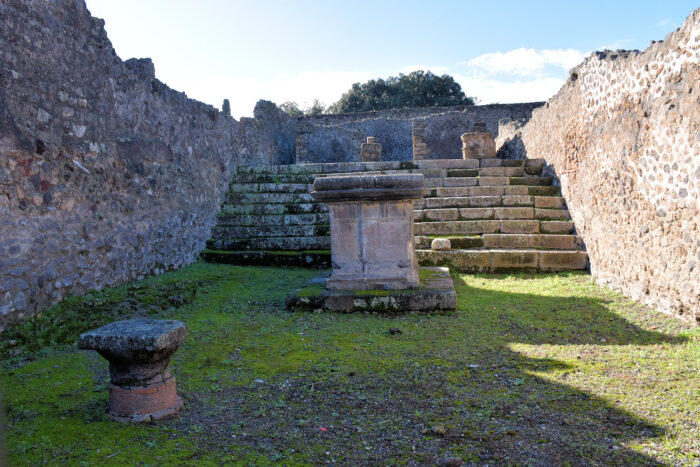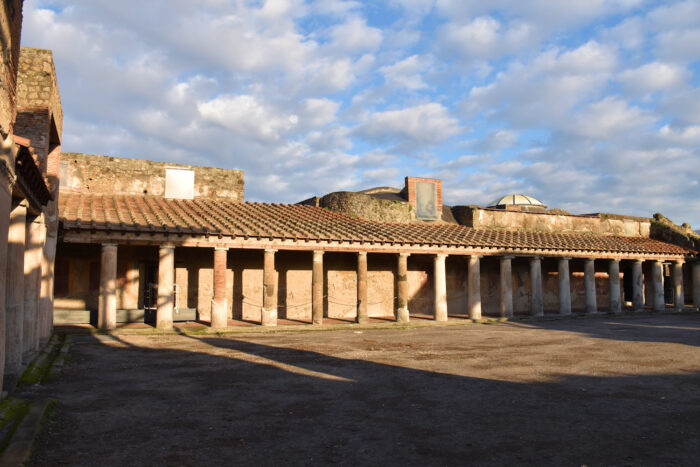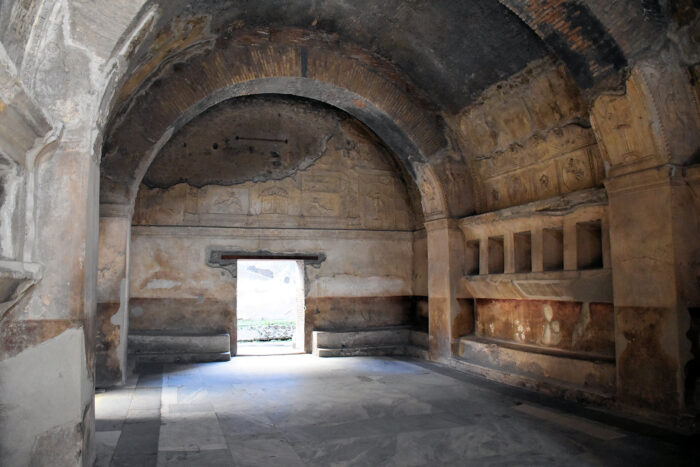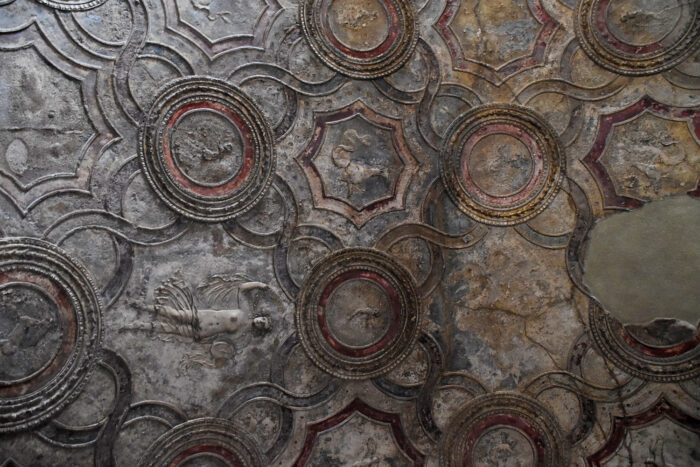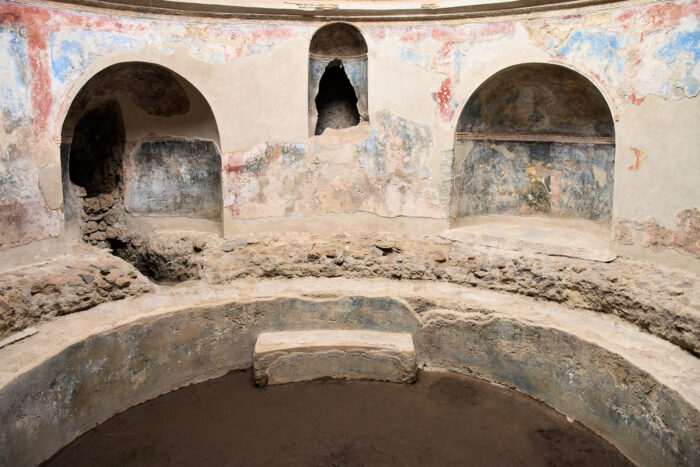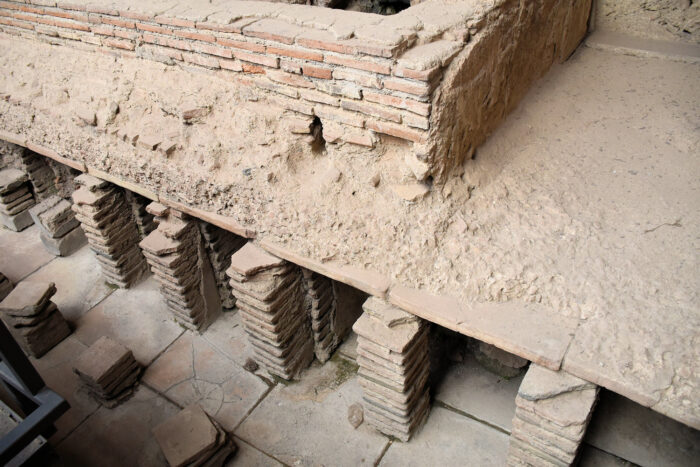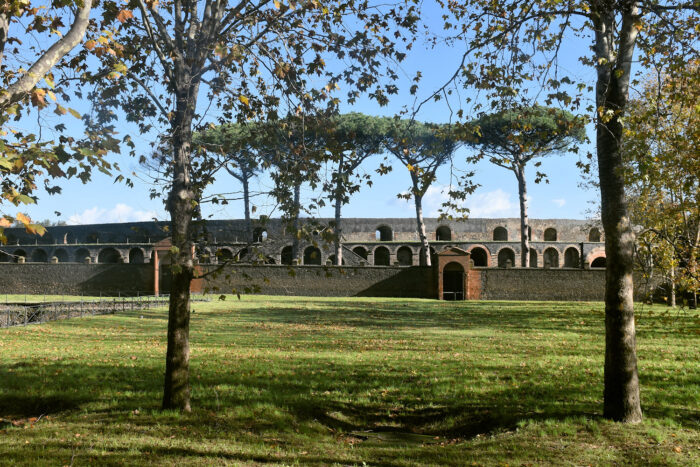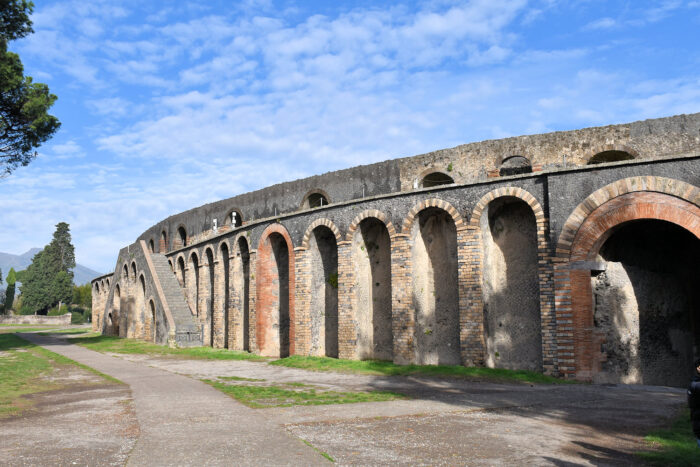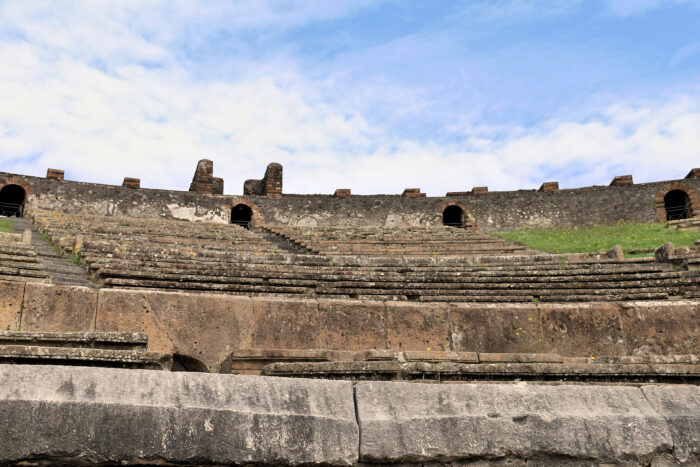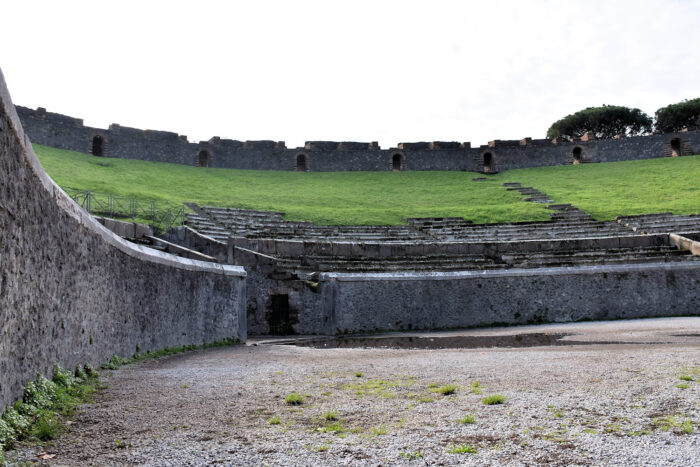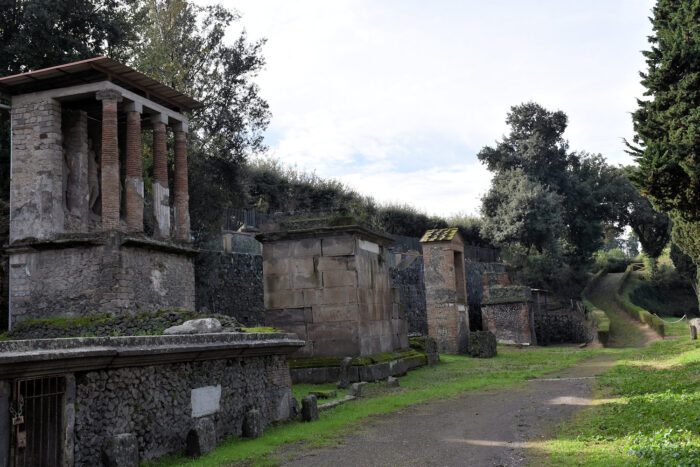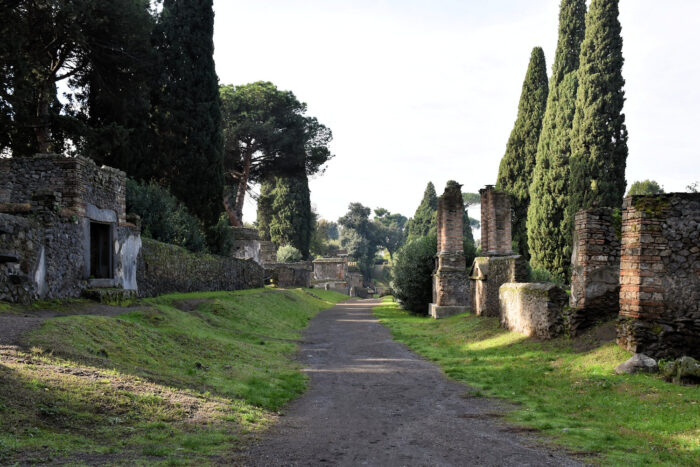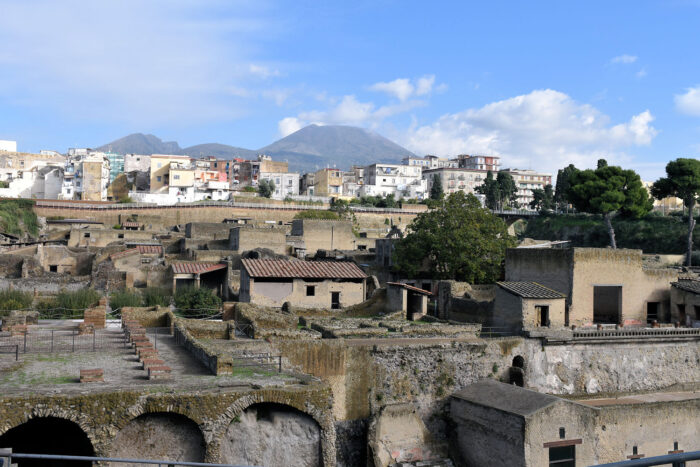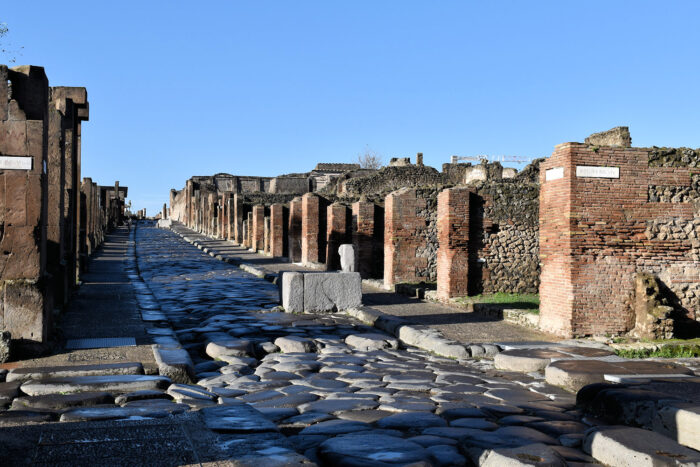Back in 62 CE (AD), Pompeii was struck by a major earthquake. They were still repairing damage from this seventeen years later Vesuvius erupted and buried the city. Apparently, many of the public buildings had not yet been repaired. (Also, as a random fact because I only found this out the other day, in 89 BCE, Pompeii was besieged by Romans.)
So, let’s start with the the Forum, the heart of any good Roman city. It was a public square surrounded by markets, government buildings and the major temples. You can see some remains of the colonnade that ran along the sides.
At one end is the main temple, Temple of Jupiter or Capitolium (dedicated to the trio of Jupiter, Kuno & MInera). One of the buildings that wasn’t repaired after the earthquake. (Such an innocent looking mountain in the background.)
On one side of the Forum is the Sanctuary of Apollo (it doesn’t usually have a lake).
Across from this was the Basilica (this and next photo), which was used as a court and for other government functions.
There were other forums in the city. This is the smaller, and I think older, Triangular Forum. It adjoins the theatre district.
The small theatre.
The big theatre. Behind it, you can see the gladiators barracks.
The building constituted the headquarters of the corporation of gladiators and was used for their training, as indicated by the 120 gladiatorial theme inscriptions found inside the building. After the earthquake of 62 AD the structure changed its function and became a private home, probably based on the decision taken by the Senate of Rome to dissolve gladiators’ associations after a violent riot broke out between the people from Pompeii and those from Nocera, who flowed en masse into the amphitheatre in 59 AD to support their favorite gladiators.
Pompeii
Also nearby is the Samnite or Sannica Palaestra (Gymaniusm) where men and boys could train or exercise. The pedestal was apparently for award cerenomies.
Next door is one of the many small temple through the city, this one dedicated to the Egyptian goddess, Isis
And this one is dedicated to Asclepius (patron of medicine) or Jupiter Meilichius.
There were four or five public bath houses in Pompeii. These, the Stabian Baths, are the oldest.
Change room, with “lockers” on the right.
The ceiling
The frigadarium, the cold bath. (Why is is always the frigadarium??)
The warmer baths were heated by hot air flowing under the floor.
On the other side of the town is the Large Palaestra, with a large open area for exercising surrounded by a colannade. (Inside is an exhibition about Pompeii sensuality with some interesting exhibits.)
The Palaestra is just across the road from amphitheatre. (Yes, you are going to get lots of photos of amphitheatre.)
This is where the gladiatorfights took place, and wild animal fights and other events.
As with some sports today, support could be fanatical. During one particular gladiatorial contest in AD59, fighting broke out in the crowd between factions from the colonies of Pompeii and Nuceria. According to the historian Tacitus (Annals XIV, 17):
‘it arose at a show arranged by Livineius Regulus. During the exchange of taunts abuse led to stone throwing, and then swords were drawn. Many Nucerians were taken home wounded and mutilated; many bereavements, too, were suffered by parents and children… Livineius and others held responsible for the disorders were exiled.’
Because of the violence the Senate prohibited Pompeii from holding similar events for a period of ten years but this measure was revoked three years later after the earthquake of AD62.
AD 79: Destruction and Rediscovery
And finally the Necropolis (the City of the Dead), the cemetery. They were built along the streets leading into a town/city. At Pompeii, thhere were five. This is the one at the Nocera Gate.
The necropolis of the Nocera Gate, in the south, is at the moment the largest of the city. It hosts some important buildings, such as the tomb of Eumachia, but it was mainly used by citizens of the middle or lower classes, including many freedmen living in the nearby Regiones I and II.
Pompeii
